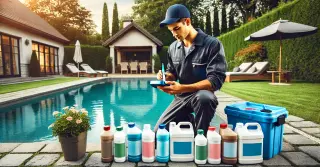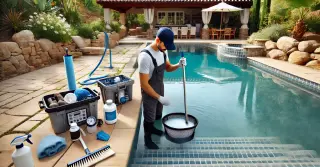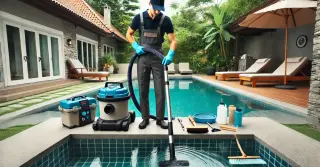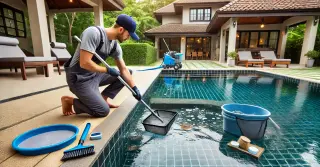Pool Chemical Balance Iselin NJ

Maintaining the proper chemical balance is vital for swimmer safety and pool health. Balanced chemicals inhibit algae and bacteria, maintain clear, clean water, and protect the pool's surface and equipment.
- Balancing pH Levels: The pH balance in your pool reflects its acidity or alkalinity. A balanced pH level should be between 7.2 and 7.6. Low pH levels result in acidic water, causing skin irritation and equipment corrosion. High pH levels make the water alkaline, leading to cloudiness and scaling. Consistently testing and adjusting pH levels is vital for swimmer comfort and safety.
- Managing Chlorine Concentration: Chlorine plays a crucial role in pool sanitation, destroying bacteria, algae, and other harmful pathogens. The proper chlorine level is between 1-3 ppm. Low chlorine levels cause unsanitary water, with bacteria and algae proliferating. High chlorine levels result in skin and eye irritation and create a strong chlorine smell. Regularly testing and adjusting chlorine levels ensures effective sanitation and swimmer comfort.
Balancing AlkalinityTotal alkalinity is another critical aspect of pool water chemistry. Alkalinity buffers pH levels, preventing drastic pH fluctuations. The optimal total alkalinity range is 80-120 ppm.
- Stabilizing pH Levels: Balanced alkalinity stabilizes pH levels, preventing rapid pH changes that irritate skin and damage surfaces. If alkalinity is too low, pH levels can fluctuate wildly, making it difficult to maintain a consistent balance. If alkalinity is too high, it can make the water cloudy and lead to scaling. Frequent alkalinity testing and adjustments is vital for a balanced and stable pool.
- Managing Calcium Hardness: Calcium hardness indicates the calcium level in pool water. The ideal range for calcium hardness is between 200-400 ppm. Insufficient calcium causes corrosive water, damaging surfaces and equipment. High calcium levels lead to scaling and cloudy water. Consistently monitoring and adjusting calcium hardness is important for protecting your pool and ensuring clear water.
Safe Handling of Pool ChemicalsProper handling and storage of pool chemicals is crucial for safety and efficiency. Chemicals should be stored in a cool, dry place, away from direct sunlight and out of reach of children and pets. Adhere to manufacturer guidelines for correct dosing and application.
- Proper Chemical Measurement and Mixing: Measuring pool chemicals accurately is crucial for maintaining balance. Using too much or too little can imbalance chemicals and harm water quality. Always use a clean, dry measuring tool and never mix chemicals directly with each other. If needed, mix chemicals in water as per instructions.
- Chemical Reaction Awareness: Some chemicals can react dangerously when combined. For example, chlorine and acid should never be mixed. Being aware of these interactions helps prevent accidents and ensures safe handling. Keep chemicals separate and handle with caution to prevent harmful reactions.
Keeping your pool's chemical balance is vital for a safe, clean, and pleasant swimming experience. By consistently testing and adjusting pH, chlorine, alkalinity, and calcium, you can keep your pool water in optimal condition.
Safe handling and storage of pool chemicals improve the safety and longevity of your pool.




